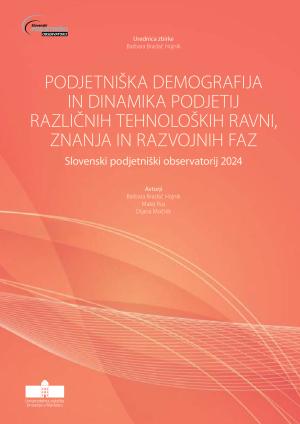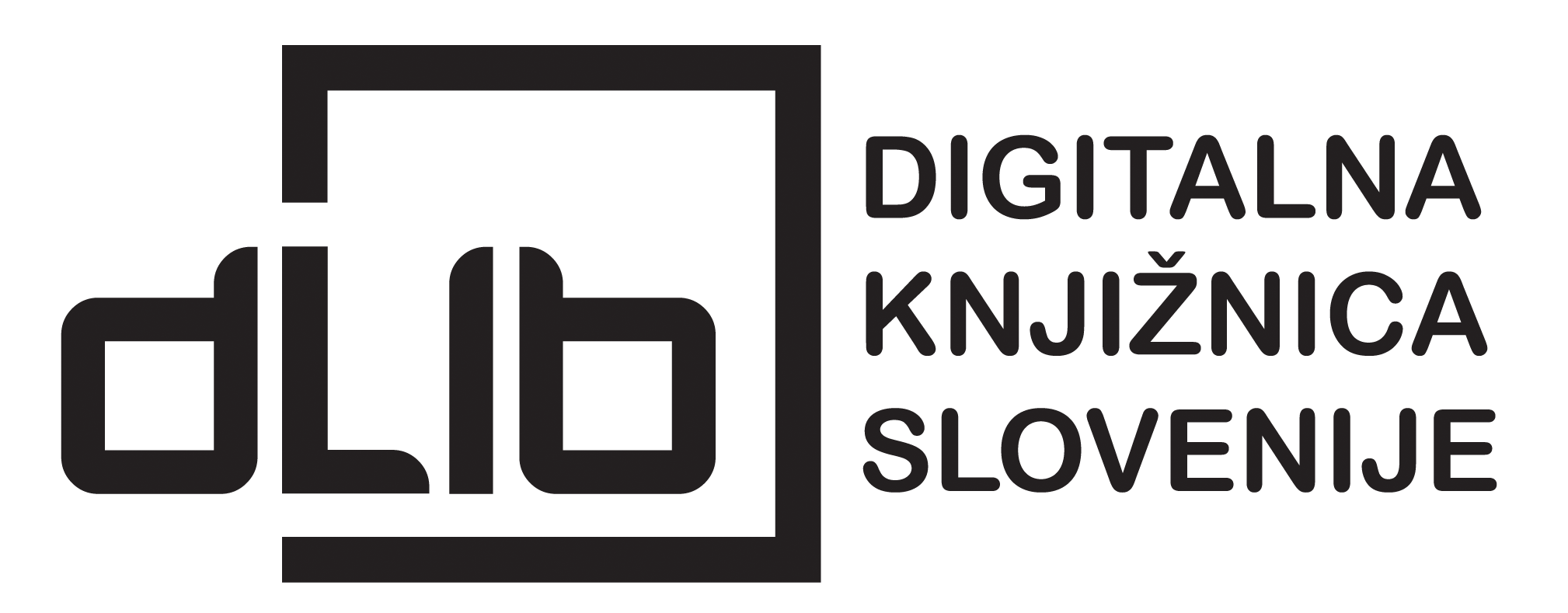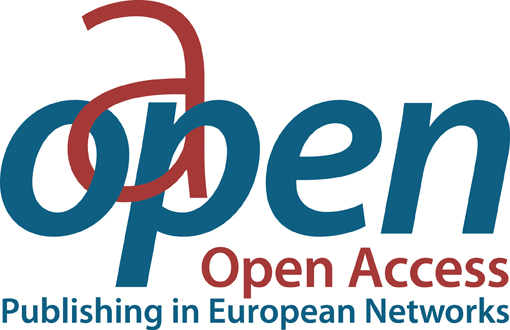Podjetniška demografija in dinamika podjetij različnih tehnoloških ravni, znanja in razvojnih faz: Slovenski podjetniški observatorij 2024
Keywords:
companies, sole proprietors, financial performance indicators, high-tech companies, knowledge-based companies, characteristics, opportunities and constraints, strategies and policies, empirical analysisSynopsis
Business Demographics and the Dynamics of Companies With Different Levels of Technology, Knowledge and Development Stages: The Slovenian Entrepreneurship Observatory 2024. The Slovenian Entrepreneurship Observatory 2024 provides a comprehensive analysis of entrepreneurial demographics and the dynamics of companies of different technological levels, skills and development stages. In the first part of the survey, we examined the key demographic characteristics of Slovenian enterprises, including their number, size, revenues, labour costs and value added, disaggregated by industry, region and size class. The second part of the study focuses on firms with different levels of technology intensity and knowledge-intensive services, with an emphasis on comparing Slovenia with the EU. We have specifically analysed firms at different stages of their life cycle in order to identify their competitive advantages, development challenges and opportunities for further growth and innovation. Based on the findings, we have provided strategic orientations for improving the support environment, fostering innovation, digital transformation and internationalisation of Slovenian companies, which are key to the long-term competitiveness of the economy.
Downloads
References
Abu-Bakar, H., & Charnley, F. (2024). Developing a strategic methodology for circular economy roadmapping: A theoretical framework. Sustainability, 16(15), 6682.
Acquier, A., Carbone, V., & Massé, D. (2019). How to create value (s) in the sharing economy: Business models, scalability, and sustainability. Technology innovation management review, 9(2).
Aghion, P., & Howitt, P. (2009). The Economics of Growth. MIT Press.
Al Hamad, N. M., Adewusi, O. E., Unachukwu, C. C., Osawaru, B., & Chisom, O. N. (2024). A review on the innovative approaches to STEM education. International Journal of Science and Research Archive, 11(1), 244–252.
Ardolino, M., Rapaccini, M., Saccani, N., Gaiardelli, P., Crespi, G., & Ruggeri, C. (2018). The role of digital technologies for the service transformation of industrial companies. International journal of production research, 56(6), 2116–2132.
Asad, M., Majali, T. E., Aledeinat, M., Abdelkarim Almajali, D., & Akhorshaideh, A. H. O. (2023). Green entrepreneurial orientation for enhancing SMEs financial and environmental performance: Synergetic moderation of green technology dynamism and knowledge transfer and integration. Cogent Business & Management, 10(3), 2278842.
Audretsch, D. B., Belitski, M., Caiazza, R., & Lehmann, E. E. (2020). Knowledge management and entrepreneurship. International Entrepreneurship and Management Journal, 16(2), 373–385.
Awan, U., Sroufe, R., & Bozan, K. (2022). Designing value chains for industry 4.0 and a circular economy: A review of the literature. Sustainability, 14(12), 7084.
Baiyere, A., Salmela, H., & Tapanainen, T. (2020). Digital transformation and the new logics of business process management. European journal of information systems, 29(3), 238–259.
Bănică, C. F., Sover, A., & Anghel, D. C. (2024). Printing the Future Layer by Layer: A Comprehensive Exploration of Additive Manufacturing in the Era of Industry 4.0. Applied Sciences, 14(21), 9919.
Burchardt, C., & Maisch, B. (2019). Digitalization needs a cultural change–examples of applying Agility and Open Innovation to drive the digital transformation. Procedia Cirp, 84, 112–117.
Bustinza, O. F., Gomes, E., Vendrell‐Herrero, F., & Baines, T. (2019). Product–service innovation and performance: the role of collaborative partnerships and R&D intensity. R&d Management, 49(1), 33–45.
Cai, H. H., Khan, N. U., Tang, S., Siddiqui, M., Xia, M., & Qu, H. (2024). Developing environmental sustainability policy–how financing and subsidies are influencing green innovation in mineral extraction industries in China. Journal of Environmental Management, 368, 122218.
Cantzler, J., Creutzig, F., Ayargarnchanakul, E., Javaid, A., Wong, L., & Haas, W. (2020). Saving resources and the climate? A systematic review of the circular economy and its mitigation potential. Environmental Research Letters, 15(12), 123001.
Capatina, A., Bleoju, G., & Kalisz, D. (2024). Falling in love with strategic foresight, not only with technology: European deep-tech startups’ roadmap to success. Journal of Innovation & Knowledge, 9(3), 100515.
Carrillo-Carrillo, F., & Alcalde-Heras, H. (2020). The role of technology-based knowledge-intensive business services in the innovation performance of manufacturing firms in Mexico. International Journal of Knowledge-Based Development, 11(4), 357–381.
Cauchon, N. S., Oghamian, S., Hassanpour, S., & Abernathy, M. (2019). Innovation in chemistry, manufacturing, and controls—a regulatory perspective from industry. Journal of Pharmaceutical Sciences, 108(7), 2207–2237.
Ching, H. Y., & Caetano, R. M. (2021). Dynamics of corporate startup collaboration: an exploratory study. Journal of Management Research, 13(2), 22.
Christensen, C. M. (1997). The Innovator’s Dilemma: When New Technologies Cause Great Firms to Fail. Harvard Business Review Press.
Crnogaj, K., & Rus, M. (2023). From Start to Scale: Navigating Innovation, Entrepreneurial Ecosystem, and Strategic Evolution. Administrative Sciences, 13(12), 254.
De Leon, I., Donoso, J. F., & de León, I. (2017). Innovation, startups and intellectual property management. Springer.
Devarhubli, G. (Ed.). (2022). Patents, trademarks, and copyrights: Protecting creative assets. Inkbound Publishers.
Du, J., & Vanino, E. (2021). Agglomeration externalities of fast-growth firms. Regional Studies, 55(2), 167–181.
EFPIA (2021). The Pharmaceutical Industry in Figures: Key Data 2021. European Federation of Pharmaceutical Industries and Associations.
Eliakis, S., Kotsopoulos, D., Karagiannaki, A., & Pramatari, K. (2020). Survival and growth in innovative technology entrepreneurship: a mixed-methods investigation. Administrative Sciences, 10(3), 39.
Emami Langroodi, F. (2021). Schumpeter’s Theory of Economic Development: a study of the creative destruction and entrepreneurship effects on the economic growth. Journal of Insurance and Financial Management, 4(3).
Enkel, E., Bogers, M., & Chesbrough, H. (2020). Exploring open innovation in the digital age: A maturity model and future research directions. R&D Management, 50(1).
ESNA. (2024). Navigating startup policies: Insights from ESNA's advisory board. ESNA - Europe Startup Nations Alliance. https://www.esnalliance.eu/en/reports
Etzkowitz, H., & Leydesdorff, L. (2000). The dynamics of innovation: From National Systems and "Mode 2" to a Triple Helix of university–industry–government relations. Research Policy, 29(2), 109–123.
European Commission (2020). Digital Europe Programme. European Commission. Dostopno: https://digital-strategy.ec.europa.eu/en/activities/digital-programme
European Commission. (2021). Updating the industrial strategy: Building a stronger single market. Publications Office of the European Union. Dostopno: https://commission.europa.eu/system/files/2021-05/communication-industrial-strategy-update-2020_en.pdf
European Commission. (2023). A green Deal Industrial Plan for the Net- Zero Age COM (2023) 62 final. Bruselj: Evropska komisija. Dostopno: https://commission.europa.eu/document/41514677-9598-4d89- a572-abe21cb037f4_en
European Commission. (2024a). New European innovation agenda on the move. Publications Office of the European Union. Dostopno: https://apre.it/wp-content/uploads/2024/03/new-european-innovation-agenda-on-the-move-KI0224223ENN.pdf
European Commission. (2024b). The future of European competitiveness—A competitiveness strategy for Europe. Dostopno: https://commission.europa.eu/document/download/97e481fd-2dc3-412d-be4c- f152a8232961_en
Eurostat. (2022). Statistics Explained: High-tech. Dostopno: https://ec.europa.eu/eurostat/statistics-explained/index.php?title=Glossary:High-tech
Eurostat. (2024a). Statistics Explained: High-tech classification of manufacturing industries. Dostopno: https://ec.europa.eu/eurostat/statistics-explained/index.php?title=Glossary:High-tech_classification_of_ manufacturing_industries
Eurostat. (2024b). Statistics Explained: Knowledge-intensive services (KIS). Dostopno: https://ec.europa.eu/eurostat/statistics-explained/index.php?title=Glossary:Knowledge-intensive_services_(KIS)
Eurostat. (2024c). Business enterprise R&D expenditure in high-tech sectors - NACE Rev. 2. Dostopno: https://ec.europa.eu/eurostat/databrowser/product/page/HTEC_STI_EXP2
Eurostat. (2024d). Employment in technology and knowledge-intensive sectors by NUTS 2 region and sex. Dostopno: https://ec.europa.eu/eurostat/databrowser/view/htec_emp_reg2__custom_15059836/default/table?lang=en
Eurostat. (2024e). Economic data in high-tech sectors by NACE Rev.2 activity. Dostopno: https://ec.europa. eu/eurostat/databrowser/view/htec_eco_sbs2/default/table?lang=en&category=scitech.htec.htec_ eco.htec_eco_bs
Feldman, M. P., & Lowe, N. (2018). Silicon Valley: Global Model or Unique Anomaly? Cambridge Journal of Regions, Economy and Society, 1(1), 45–65.
Feng, B., Sun, K., Chen, M., & Gao, T. (2020). The impact of core technological capabilities of high-tech industry on sustainable competitive advantage. Sustainability, 12(7), 2980.
Freund, D., Lee, R., Tüselmann, H., & Cao, Q. (2020). International high-tech SMEs innovative foreign knowledge inflows: effects of host country weak network ties and absorptive capacity. Multinational business review, 28(3), 333–354.
Garcia-Tapial, J., & Cardenete, M. A. (2023). Start-Up or Scale-Up? An Approach through Economic Impact. Journal of Management for Global Sustainability, 8(1), 10.
Garnsey, E., & Heffernan, P. (2005). High-Technology Clustering through Spin-Out and Attraction: The Cambridge Case. Regional Studies, 39(8), 1127–1144.
Ghezzi, A., Cavallo, A., Sanasi, S., & Rangone, A. (2022). Opening up to startup collaborations: open business models and value co-creation in SMEs. Competitiveness Review: An International Business Journal, 32(7), 40–61.
Gompers, P. A. (2022). Optimal investment, monitoring, and the staging of venture capital. In Venture capital (pp. 285–313). Routledge.
Govindan, K. (2022). How artificial intelligence drives sustainable frugal innovation: A multitheoretical perspective. IEEE Transactions on Engineering Management, 71, 638–655.
Gupta, V., Rubalcaba, L., Fernandez-Crehuet, J. M., & Pereira, L. F. (2021). Innovation through startup collaboration: Build a relationship with your peer startups. IEEE Engineering Management Review, 49(3), 126–135.
Huang, K. F., & Yu, C. M. J. (2011). The effect of competitive and non-competitive R&D collaboration on firm innovation. The Journal of Technology Transfer, 36(4), 383–403.
Huang, Q., & Kumarasinghe, P. J. (2024). Unleashing global opportunities: Exploring the digitalization journey of small and medium-sized enterprises in China and Sri Lanka's thriving E-commerce landscapes. Heliyon, 10(17).
Humble, J., Molesky, J., & O'Reilly, B. (2014). Lean enterprise: How high performance organizations innovate at scale. O'Reilly Media, Inc.
Instituto Nacional de Estadística. (n.d.). High technology indicators: General methodology. Dostopno: https://www.ine.es/en/daco/daco43/notaiat_en.pdf
Isenberg, D. (2010). How to Start an Entrepreneurial Revolution. Harvard Business Review, 88(6), 40–50.
Javaid, M., Haleem, A., Singh, R. P., Suman, R., & Gonzalez, E. S. (2022). Understanding the adoption of Industry 4.0 technologies in improving environmental sustainability. Sustainable Operations and Computers, 3, 203–217.
Johnson, P. C., Laurell, C., Ots, M., & Sandström, C. (2022). Digital innovation and the effects of artificial intelligence on firms’ research and development–Automation or augmentation, exploration or exploitation?. Technological Forecasting and Social Change, 179, 121636.
Jones, C. I., & Romer, P. M. (2010). The new Kaldor facts: ideas, institutions, population, and human capital. American Economic Journal: Macroeconomics, 2(1), 224–245.
Jordão, A., & Rossi, P. C. (2024). EU startup ecosystem: Driving change past, present and future. ESNA -Europe Startup Nations Alliance. Dostopno: https://backoffice.esnalliance.eu/multimedia/esna/esna-compendium-1.pdf
Judijanto, L., Hindarto, D., & Wahjono, S. I. (2023). Edge of enterprise architecture in addressing cyber security threats and business risks. International Journal Software Engineering and Computer Science (IJSECS), 3(3), 386–396.
Karimi, H., & Pina, A. (2021). Strategically addressing the soft skills gap among STEM undergraduates. Journal of Research in STEM Education, 7(1), 21–46.
Karlsson, C., & Gråsjö, U. (2021). Knowledge flows, knowledge externalities, and regional economic development. In Handbook of regional science (929–956). Berlin, Heidelberg: Springer Berlin Heidelberg.
Kasoju, N., Remya, N. S., Sasi, R., Sujesh, S., Soman, B., Kesavadas, C., ... & Behari, S. (2023). Digital health: trends, opportunities and challenges in medical devices, pharma and bio-technology. CSI Transactions on ICT, 11(1), 11–30.
Killing, J. P. (2017). How to make a global joint venture work. In International Business (pp. 321–328). Routledge.
Kleine, M., Heite, J., & Huber, L. R. (2022). Subsidized R&D collaboration: The causal effect of innovation vouchers on innovation outcomes. Research Policy, 51(6), 104515.
Knudsen, E. S., Lien, L. B., Timmermans, B., Belik, I., & Pandey, S. (2021). Stability in turbulent times? The effect of digitalization on the sustainability of competitive advantage. Journal of Business Research, 128, 360–369.
Kong, Q., Li, R., Peng, D., & Wong, Z. (2021). High-technology development zones and innovation in knowledge-intensive service firms: Evidence from Chinese A-share listed firms. International Review of Financial Analysis, 78, 101883.
Kotabe, M., & Kothari, T. (2016). Emerging market multinational companies’ evolutionary paths to building a competitive advantage from emerging markets to developed countries. Journal of World Business, 51(5), 729–743.
Kovshova, T., Trifonov, P., & Ramirez-Asis, E. (2023). Improving the efficiency of intellectualisation processes in enterprise management systems. Systems, 11(6), 266.
Langroodi, F. E. (2021). Schumpeter’s Theory of Economic Development: a study of the creative destruction and entrepreneurship effects on the economic growth. Journal of Insurance and Financial Management, 4(3), 65–81.
Lee, H., Kim, N., Kwak, K., Kim, W., Soh, H., & Park, K. (2016). Diffusion patterns in convergence among high-technology industries: A co-occurrence-based analysis of newspaper article data. Sustainability, 8(10), 1029.
Lee, J., & Kwon, H. B. (2023). Synergistic effect of R&D and exports on performance in US manufacturing industries: high-tech vs low-tech. Journal of Modelling in Management, 18(2), 343–371.
Lester, M. (2018). The creation and disruption of innovation? Key developments in innovation as concept, theory, research and practice. Innovation in the Asia Pacific: From manufacturing to the knowledge economy, 271–328.
Letta, E. (2021). Much more than a market: Report by Enrico Letta. Jacques Delors Institute. Dostopno: https://www.consilium.europa.eu/media/ny3j24sm/much-more-than-a-market-report-by-enrico-letta.pdf
Malakar, S. (2021). Agile Methodologies In-Depth: Delivering Proven Agile, SCRUM and Kanban Practices for High-Quality Business Demands (English Edition). BPB Publications.
Martínez-Noya, A., & García-Canal, E. (2021). Innovation performance feedback and technological alliance portfolio diversity: The moderating role of firms’ R&D intensity. Research Policy, 50(9), 104321.
MGTŠ. (2024). Slovenska Startup Strategija: izhodišča. Dostopno: https://www.startup.si/Data/Documents/Slovenska_startup_strategija.pdf
Moro-Visconti, R. (2025). From Incremental Know-How to Patent-Driven Startups. In Startup Valuation: From Strategic Business Planning to Digital Networking (pp. 173–239). Cham: Springer Nature Switzerland.
Nissen, V. (2018). Digital transformation of the consulting industry—introduction and overview. Digital Transformation of the Consulting Industry: Extending the Traditional Delivery Model, 1–58.
O’Dwyer, M., Filieri, R., & O’Malley, L. (2023). Establishing successful university–industry collaborations: barriers and enablers deconstructed. The Journal of Technology Transfer, 48(3), 900–931.
OECD (2021). OECD Science, Technology and Innovation Outlook 2021: Times of Crisis and Opportunity. OECD Publishing.
Oliinyk, O., Bilan, Y., Mishchuk, H., Akimov, O., & Vasa, L. (2021). The impact of migration of highly skilled workers on the country's competitiveness and economic growth. Montenegrin Journal of Economics.
Oranburg, S. C. (2020). Start-up financing. In Start-Up Creation (pp. 59–79). Woodhead Publishing.
Paul, J., & Rosado-Serrano, A. (2019). Gradual internationalization vs born-global/international new venture models: A review and research agenda. International marketing review, 36(6), 830–858.
Pedchenko, N., Strilec, V., Kolisnyk, G. M., Dykha, M. V., & Frolov, S. (2018). Business angels as an alternative to financial support at the early stages of small businesses’ life cycle.
Perkin, N. (2023). Agile transformation: structures, processes and mindsets for the digital age. Kogan Page Publishers.
Quas, A., Mason, C., Compañó, R., Testa, G., & Gavigan, J. P. (2022). The scale-up finance gap in the EU: Causes, consequences, and policy solutions. European Management Journal, 40(5), 645–652.
Romer, P. M. (1990). Endogenous Technological Change. Journal of Political Economy, 98(5), 71–102.
Sánchez-Bayón, A., & Aznar, E. T. (2020). Business and labour culture changes in digital paradigm: rise and fall of human resources and the emergence of talent development. Cogito: Multidisciplinary Res. J., 12, 225.
Sareen, A., & Pandey, S. (2022). Organizational innovation in knowledge intensive business services: The role of networks, culture and resources for innovation. FIIB Business Review, 11(1), 107–118.
Savanevičienė, A., & Vilčiauskaitė, B. (2017). Practical application of exclusive and inclusive talent management strategy in companies. Business, Management and Economics Engineering, 15(2), 242–260.
Sergei, T., Arkady, T., Natalya, L., Pathak, R. D., Samson, D., Husain, Z., & Sushil, S. (2023). Digital transformation enablers in high-tech and low-tech companies: A comparative analysis. Australian Journal of Management, 48(4), 801–843.
Shiohira, K. (2021). Understanding the Impact of Artificial Intelligence on Skills Development. Education 2030. UNESCO-UNEVOC International Centre for Technical and Vocational Education and Training. Dostopno: https://unevoc.unesco.org/pub/understanding_the_impact_of_ai_on_skills_development. pdf
Spigel, B. (2017). The Relational Organization of Entrepreneurial Ecosystems. Entrepreneurship Theory and Practice, 41(1), 49–72.
Sreenivasan, A., & Suresh, M. (2024). Agile readiness for sustainable operations in start-ups. International Journal of Innovation Science, 16(1), 166–192.
Stryabkova, E. A., Vladyka, M. V., Lyshchikova, J. V., Rzayev, A. Y., & Kochergin, M. A. (2021). Smart specialization as a comprehensive territorial and sectoral approach to determining regional development priorities. Journal of Environmental Management & Tourism, 12(5), 1353–1370.
Tallman, S., Luo, Y., & Buckley, P. J. (2018). Business models in global competition. Global Strategy Journal, 8(4), 517–535.
Taylor, S. J., Johansson, B., Jeon, S., Lee, L. H., Lendermann, P., & Shao, G. (2021, December). Using simulation and digital twins to innovate: are we getting smarter?. In 2021 Winter Simulation Conference (WSC) (pp. 1–13). IEEE.
Teixeira, E. G., Moura, G. L. D., Lopes, L. F. D., Marconatto, D. A. B., & Fischmann, A. A. (2021). The influence of dynamic capabilities on startup growth. RAUSP Management Journal, 56, 88–108.
Van Tulder, R., Seitanidi, M. M., Crane, A., & Brammer, S. (2016). Enhancing the impact of cross-sector partnerships: Four impact loops for channeling partnership studies. Journal of Business Ethics, 135, 1–17.
Varga, A., Szabó, N., & Sebestyén, T. (2020). Economic impact modelling of smart specialization policy: Which industries should prioritization target?. Papers in Regional Science, 99(5), 1367–1389.
Veile, J. W., Schmidt, M. C., & Voigt, K. I. (2022). Toward a new era of cooperation: How industrial digital platforms transform business models in Industry 4.0. Journal of Business Research, 143, 387–405.
Vial, G. (2021). Understanding digital transformation: A review and a research agenda. Managing digital transformation, 13-66.
Visintin, F., & Pittino, D. (Eds.). (2016). Fast growing firms in a slow growth economy: institutional conditions for innovation. Edward Elgar Publishing.
Wang, K. J., & Lestari, Y. D. (2013). Firm competencies on market entry success: Evidence from a high-tech industry in an emerging market. Journal of Business Research, 66(12), 2530–2538.
Wei, X., Luo, J., Pu, A., Liu, Q., Zhang, L., Wu, S., ... & Wan, X. (2022). From biotechnology to bioeconomy: A review of development dynamics and pathways. Sustainability, 14(16), 10413.
Woodfield, P. J., Ooi, Y. M., & Husted, K. (2023). Commercialisation patterns of scientific knowledge in traditional low-and medium-tech industries. Technological Forecasting and Social Change, 189, 122349.
Workforce Information Council High-Tech Study Group. (2015). High-tech industries in the U.S. economy. Dostopno: https://labor.idaho.gov/publications/High-Tech%20Industries%20In%20the%20U.S.%20 Economy.pdf
Wysokińska, Z. (2021). A review of the impact of the digital transformation on the global and European economy. Comparative Economic Research. Central and Eastern Europe, 24(3), 75–92.
Yu, Y., Ren, F., Ju, Y., Zhang, J., & Liu, X. (2024). Exploring the role of digital transformation and breakthrough innovation in enhanced performance of energy enterprises: fresh evidence for achieving sustainable development goals. Sustainability, 16(2), 650.
Zhen, M., & Ding, W. (2024). Empowering employees for digital transformation in manufacturing enterprises: A case study. South African Journal of Business Management, 55(1), 4207.







